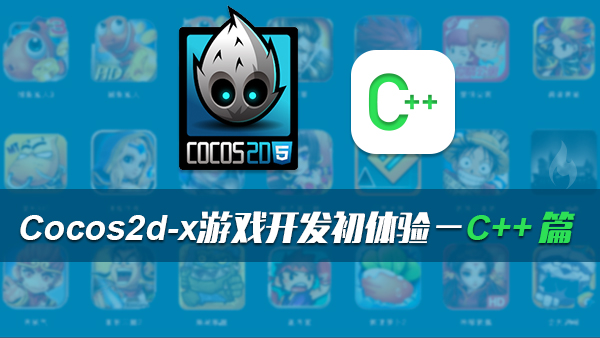在本指南中,我们将从C++基础回顾开始,逐步深入到项目规划与设计、C++常用库介绍、项目实战、项目测试与部署,最后推荐学习资源与进阶方向。通过这一系列的步骤,你将能够掌握C++编程的基本知识,并能够独立完成一个简易图书管理系统的开发。
1. C++基础回顾1.1 变量与数据类型
C++中的变量用于存储数据,而数据类型则定义了变量可以存储的数据种类。C++提供了多种基本的数据类型,包括整型、浮点型、字符型等。
1.1.1 整型
整型变量用来存储整数。C++中有几种不同大小的整型,包括short、int、long等。
short s = 10;
int i = 20;
long l = 30;1.1.2 浮点型
浮点型变量用来存储浮点数。C++中常用的浮点型包括float和double。
float f = 3.14f;
double d = 3.1415926535;1.1.3 字符型
字符型变量用来存储字符。C++中常用的字符型有char。
char c = 'A';1.2 控制结构
控制结构用于控制程序的执行流程。C++中的控制结构包括条件语句、循环语句等。
1.2.1 条件语句
条件语句用于根据条件选择执行不同的代码块。常用的条件语句有if和switch。
int x = 10;
if (x > 5) {
std::cout << "x is greater than 5" << std::endl;
} else {
std::cout << "x is less than or equal to 5" << std::endl;
}
int y = 2;
switch (y) {
case 1:
std::cout << "y is 1" << std::endl;
break;
case 2:
std::cout << "y is 2" << std::endl;
break;
default:
std::cout << "y is not 1 or 2" << std::endl;
}1.2.2 循环语句
循环语句用于重复执行一段代码。常用的循环语句有for、while和do-while。
for (int i = 0; i < 5; i++) {
std::cout << i << std::endl;
}
int j = 0;
while (j < 5) {
std::cout << j << std::endl;
j++;
}
int k = 0;
do {
std::cout << k << std::endl;
k++;
} while (k < 5);1.3 函数与返回值
函数是一段实现特定功能的代码块,可以接收参数并返回值。C++中的函数可以有多种返回类型,包括void、int、float等。
1.3.1 函数定义
函数定义包括函数名、参数列表和函数体。
int add(int a, int b) {
return a + b;
}1.3.2 函数调用
函数调用可以通过函数名和参数列表来调用。
int result = add(3, 4);
std::cout << "Result: " << result << std::endl;1.4 数组与字符串
数组用于存储相同类型的多个值,而字符串可以看作是特殊的数组,用于存储字符。
1.4.1 数组
数组定义包括数据类型和数组大小。
int arr[5] = {1, 2, 3, 4, 5};1.4.2 字符串
字符串通常使用char数组或std::string类来表示。
char str[10] = "Hello";
std::string str2 = "World";2.1 项目需求分析
在项目开始前,需要明确项目的功能需求。一个简易图书管理系统可能需要以下功能:
- 添加图书信息
- 删除图书信息
- 查找图书信息
- 显示所有图书信息
2.2 项目架构设计
在项目架构设计阶段,需要确定项目的逻辑结构和模块划分。一个简易图书管理系统可以分为以下模块:
- 主界面模块:显示菜单和选项
- 数据管理模块:处理图书信息的增删查改
- 用户交互模块:接收用户输入并显示结果
2.2.1 主界面模块
主界面模块用于显示菜单和选项。可以通过一个循环来不断显示菜单并接收用户选择,直到用户选择退出。
void displayMenu() {
std::cout << "Menu:\n";
std::cout << "1. Add book\n";
std::cout << "2. Remove book\n";
std::cout << "3. Find book\n";
std::cout << "4. Display all books\n";
std::cout << "5. Exit\n";
}
int mainMenu() {
int choice;
displayMenu();
std::cin >> choice;
return choice;
}2.2.2 数据管理模块
数据管理模块负责处理图书信息的增删查改。可以通过一个类来表示图书信息,并使用一个容器来存储所有图书信息。
#include <vector>
using namespace std;
class Book {
public:
string title;
string author;
int year;
Book(string t, string a, int y) : title(t), author(a), year(y) {}
};
vector<Book> books;
void addBook(string title, string author, int year) {
books.push_back(Book(title, author, year));
}
void removeBook(const string& title) {
for (auto it = books.begin(); it != books.end(); ++it) {
if (it->title == title) {
books.erase(it);
return;
}
}
}
bool findBook(const string& title) {
for (const auto& book : books) {
if (book.title == title) {
cout << "Title: " << book.title << ", Author: " << book.author << ", Year: " << book.year << endl;
return true;
}
}
return false;
}
void displayBooks() {
for (const auto& book : books) {
cout << "Title: " << book.title << ", Author: " << book.author << ", Year: " << book.year << endl;
}
}2.2.3 用户交互模块
用户交互模块用于接收用户输入并显示结果。可以通过主界面模块接收用户选择并调用相应的数据管理模块函数。
int main() {
int choice;
while ((choice = mainMenu()) != 5) {
switch (choice) {
case 1:
{
string title, author;
int year;
cout << "Enter title: ";
cin >> title;
cout << "Enter author: ";
cin >> author;
cout << "Enter year: ";
cin >> year;
addBook(title, author, year);
}
break;
case 2:
{
string title;
cout << "Enter title to remove: ";
cin >> title;
removeBook(title);
}
break;
case 3:
{
string title;
cout << "Enter title to find: ";
cin >> title;
findBook(title);
}
break;
case 4:
displayBooks();
break;
default:
cout << "Invalid choice" << endl;
}
}
return 0;
}2.3 编写项目文档
在项目开始前,需要编写项目文档,这包括项目需求文档、设计文档和开发计划等。
3. C++常用库介绍3.1 标准库介绍
C++标准库提供了丰富的函数和类,可以方便地进行程序开发。常用的标准库包括iostream、string等。
3.1.1 iostream
iostream库提供了输入输出流,可以方便地进行输入输出操作。
#include <iostream>
using namespace std;
int main() {
int x;
cout << "Enter a number: ";
cin >> x;
cout << "You entered: " << x << endl;
return 0;
}3.1.2 string
string库提供了字符串处理功能,可以方便地进行字符串操作。
#include <string>
using namespace std;
int main() {
string str = "Hello World";
cout << str << endl;
str += "!";
cout << str << endl;
return 0;
}3.2 第三方库简介
除了C++标准库,还有很多第三方库可以方便地进行程序开发。常用的第三方库包括Boost、Eigen等。
3.2.1 Boost
Boost库提供了大量的模板函数,可以方便地进行各种复杂操作。
#include <boost/algorithm/string.hpp>
using namespace boost::algorithm;
int main() {
string str = "Hello World";
to_upper(str);
cout << str << endl;
return 0;
}3.2.2 Eigen
Eigen库提供了高效的线性代数计算,可以方便地进行矩阵操作。
#include <Eigen/Dense>
using namespace Eigen;
int main() {
Matrix3f m = Matrix3f::Random();
cout << "Here is a random 3x3 matrix:\n" << m << endl;
return 0;
}4.1 功能需求分析
一个简易图书管理系统需要实现以下功能:
- 添加图书信息
- 删除图书信息
- 查找图书信息
- 显示所有图书信息
4.2 代码实现步骤
4.2.1 添加图书信息
添加图书信息可以使用一个类来表示图书信息,并使用一个容器来存储所有图书信息。
#include <iostream>
#include <vector>
using namespace std;
class Book {
public:
string title;
string author;
int year;
Book(string t, string a, int y) : title(t), author(a), year(y) {}
};
vector<Book> books;
void addBook() {
string title, author;
int year;
cout << "Enter title: ";
cin >> title;
cout << "Enter author: ";
cin >> author;
cout << "Enter year: ";
cin >> year;
books.push_back(Book(title, author, year));
}
void displayBooks() {
for (const auto& book : books) {
cout << "Title: " << book.title << ", Author: " << book.author << ", Year: " << book.year << endl;
}
}
int main() {
addBook();
displayBooks();
return 0;
}4.2.2 删除图书信息
删除图书信息可以通过用户输入图书标题来查找并删除对应的图书信息。
bool removeBook(const string& title) {
for (auto it = books.begin(); it != books.end(); ++it) {
if (it->title == title) {
books.erase(it);
return true;
}
}
return false;
}
int main() {
addBook();
string title;
cout << "Enter title to remove: ";
cin >> title;
if (removeBook(title)) {
cout << "Book removed" << endl;
} else {
cout << "Book not found" << endl;
}
displayBooks();
return 0;
}4.2.3 查找图书信息
查找图书信息可以通过用户输入图书标题来查找对应的图书信息。
bool findBook(const string& title) {
for (const auto& book : books) {
if (book.title == title) {
cout << "Title: " << book.title << ", Author: " << book.author << ", Year: " << book.year << endl;
return true;
}
}
return false;
}
int main() {
addBook();
string title;
cout << "Enter title to find: ";
cin >> title;
if (findBook(title)) {
cout << "Book found" << endl;
} else {
cout << "Book not found" << endl;
}
return 0;
}4.2.4 显示所有图书信息
显示所有图书信息可以直接遍历图书信息容器并输出每个图书信息。
int main() {
addBook();
displayBooks();
return 0;
}4.3 代码调试与优化
在实现功能后,需要进行代码调试和优化。调试可以使用调试工具或添加日志输出来检查程序执行流程。优化可以包括代码重构、性能优化等。
5. 项目测试与部署5.1 单元测试方法
单元测试是测试软件中最小可测试单元的一种测试方法。可以使用第三方库如Google Test来实现单元测试。
5.1.1 Google Test
Google Test是一个流行的C++单元测试框架。
#include <gtest/gtest.h>
#include "Book.h"
TEST(BookTest, AddBook) {
Book book("Title", "Author", 2020);
EXPECT_EQ(book.title, "Title");
EXPECT_EQ(book.author, "Author");
EXPECT_EQ(book.year, 2020);
}
int main(int argc, char **argv) {
::testing::InitGoogleTest(&argc, argv);
return RUN_ALL_TESTS();
}5.2 项目部署流程
项目部署流程包括编译项目、打包项目、发布项目等。
5.2.1 编译项目
可以使用C++编译器如g++来编译项目。
g++ main.cpp -o book_manager5.2.2 打包项目
可以使用打包工具如tar来打包项目。
tar -czvf book_manager.tar.gz book_manager5.2.3 发布项目
可以将打包后的项目发布到服务器或云平台。
scp book_manager.tar.gz user@server:/path/to/deploy5.3 错误处理与日志记录
错误处理和日志记录可以提高程序的健壮性和可维护性。可以使用第三方库如Boost Log来实现日志记录。
5.3.1 Boost Log
Boost Log是一个流行的C++日志库。
#include <boost/log/trivial.hpp>
int main() {
BOOST_LOG_TRIVIAL(info) << "This is an info message";
BOOST_LOG_TRIVIAL(error) << "This is an error message";
}6.1 推荐书籍与在线资源
推荐的一些在线资源包括慕课网等,可以提供丰富的课程和教程。
6.1.1 慕课网
慕课网提供了丰富的C++课程和教程,适合不同水平的学习者。
6.2 进一步学习方向
进一步学习方向可以包括更深入的数据结构与算法、网络编程、并发编程等。
6.2.1 数据结构与算法
学习数据结构与算法可以提高程序的效率和性能。
#include <vector>
using namespace std;
vector<int> getPrimes(int n) {
vector<bool> isPrime(n + 1, true);
vector<int> primes;
for (int i = 2; i <= n; i++) {
if (isPrime[i]) {
primes.push_back(i);
for (int j = i * i; j <= n; j += i) {
isPrime[j] = false;
}
}
}
return primes;
}
int main() {
vector<int> primes = getPrimes(100);
for (int prime : primes) {
cout << prime << " ";
}
return 0;
}6.2.2 网络编程
学习网络编程可以实现网络通信和分布式系统。
#include <iostream>
#include <sys/socket.h>
#include <netinet/in.h>
#include <arpa/inet.h>
#include <unistd.h>
int main() {
int sock = socket(AF_INET, SOCK_STREAM, 0);
struct sockaddr_in addr;
addr.sin_family = AF_INET;
addr.sin_port = htons(8080);
addr.sin_addr.s_addr = INADDR_ANY;
bind(sock, (struct sockaddr*)&addr, sizeof(addr));
listen(sock, 5);
int client = accept(sock, NULL, NULL);
char buffer[1024] = {0};
read(client, buffer, sizeof(buffer));
cout << buffer << endl;
close(client);
close(sock);
return 0;
}6.2.3 并发编程
学习并发编程可以实现多线程和并行计算。
#include <iostream>
#include <thread>
#include <chrono>
void print(int n) {
for (int i = 0; i < n; i++) {
std::this_thread::sleep_for(std::chrono::milliseconds(100));
std::cout << "Thread " << std::this_thread::get_id() << " : " << i << std::endl;
}
}
int main() {
std::thread t1(print, 5);
std::thread t2(print, 5);
t1.join();
t2.join();
return 0;
}通过以上步骤,你将能够掌握C++编程的基本知识,并能够独立完成一个简易图书管理系统的开发。希望本指南能帮助你更好地学习和应用C++编程。

 随时随地看视频
随时随地看视频




